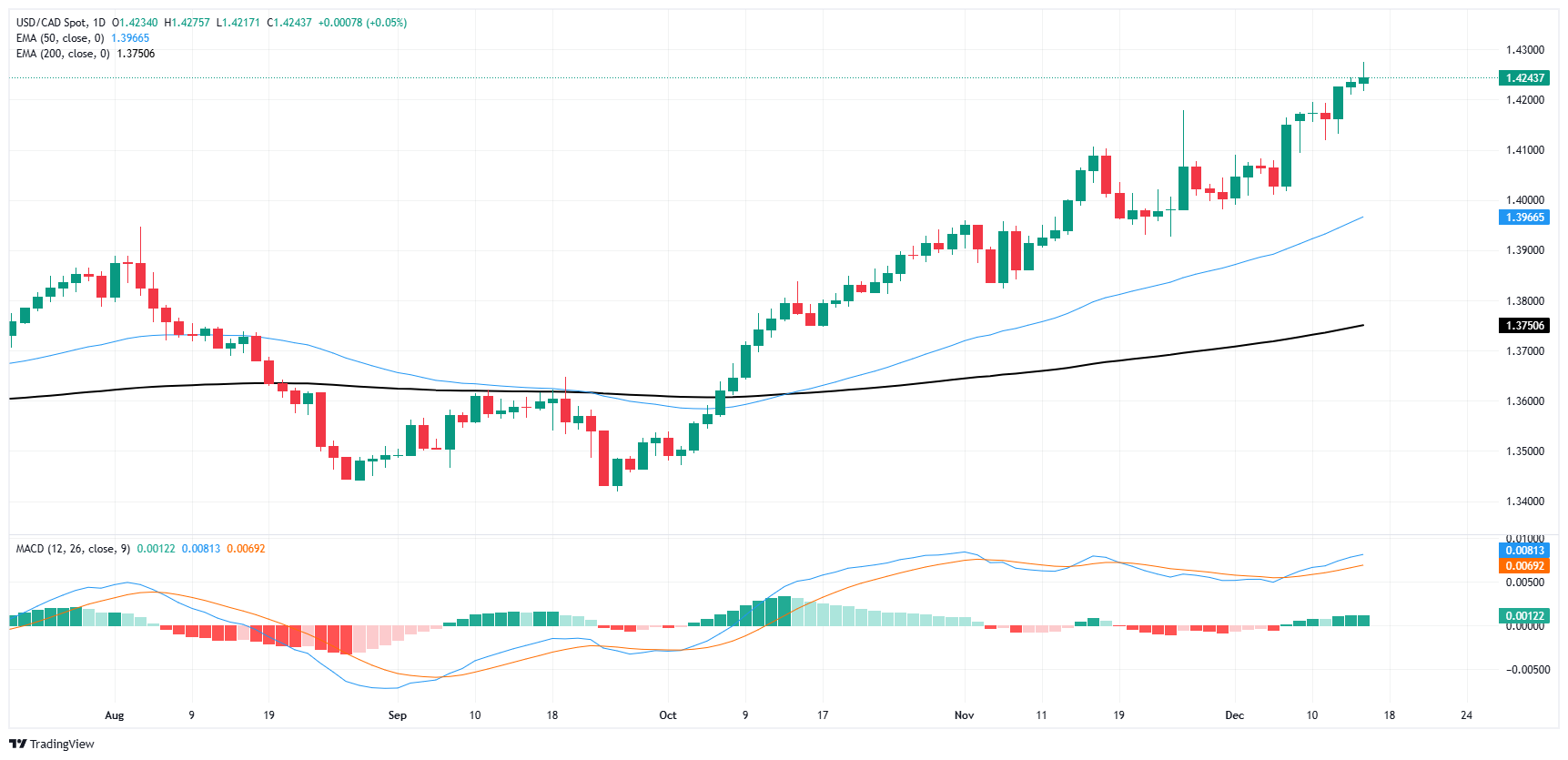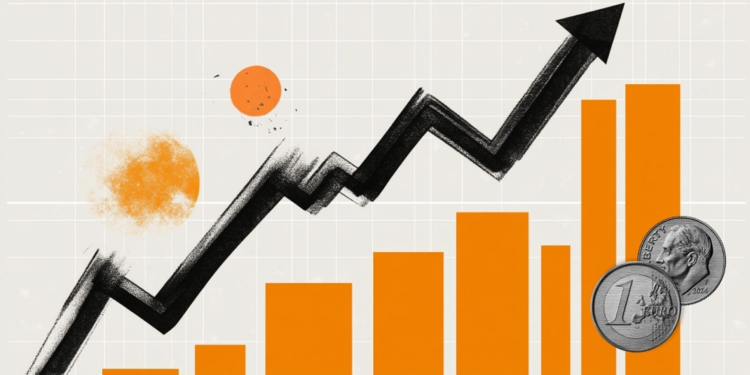- The Canadian dollar fell a scant tenth of a percent, but tested multi-year lows.
- Canada expects a drop in economic growth in 2025 and 2026.
- Despite reassuring words from BoC’s Macklem, markets continue to punish the CAD.
The Canadian Dollar (CAD) hit another weak point on Monday, testing a 56-month low near 1.4250 against the US Dollar. With the CAD falling to its lowest prices in almost five years against the Dollar, soft language from Bank of Canada (BoC) Governor Tiff Macklem and a tumultuous release of Canada’s latest Federal Economic Statement did little to calm tensions. investor concerns.
Canada is now expected to see slightly lower growth in 2025 and 2026, and a more optimistic outlook on Canadian gross domestic product (GDP) growth in 2024 is met with some skepticism from CAD traders. Canada’s Finance Minister Chrystia Freeland resigned from her position early Monday, sending the government’s FES release into a spiral as investors scrambled to figure out who would deliver the report.
Market Drivers: CAD Continues to Suffer Near Five-Year Lows
- The Canadian Dollar retreated to start the new trading week, pushing the US Dollar above 1.4250 against the CAD for the first time since April 2020.
- The CAD is approaching a 2% drop against the USD in December alone.
- BoC Governor Macklem notes that Canada’s lagging growth could save the BoC from a prolonged fight against inflation.
- According to the Canadian government’s latest FES, Canadian GDP is expected to reach 1.3% in 2024, compared to the previous forecast of 0.7% set in April.
- The GDP growth forecast for 2025 has been revised downwards to 1.7% from 1.9% previously, and 2026 growth is expected to decline to 2.1% from 2.2% previously.
- Canada’s federal deficit is now expected to widen to C$42.2 billion, compared to April’s initial forecast of C$38.9 billion.
Canadian Dollar Price Forecast
The recent decline in the Canadian Dollar has propelled USD/CAD to new multi-year highs, with the pair testing 1.4275 on Monday. USD/CAD has closed higher on a weekly basis in all but two of the last ten consecutive weeks.
CAD technical chart bulls will look for a bearish reversal on the USD/CAD chart as the near-term price action is well ahead of the 50-day EMA, which is rising towards 1.4000. A long-term sideways move is revealed on the monthly candles, but a bullish run in the Dollar flows makes accumulating short USD/CAD positions a dangerous undertaking.
USD/CAD Daily Chart
The Canadian Dollar FAQs
The key factors that determine the price of the Canadian Dollar (CAD) are the level of interest rates set by the Bank of Canada (BoC), the price of oil, Canada’s main export product, the health of its economy, inflation and the trade balance, which is the difference between the value of Canadian exports and its imports. Other factors are market confidence, that is, whether investors bet on riskier assets (risk-on) or look for safe assets (risk-off), with the risk-on being positive for the CAD. As its largest trading partner, the health of the US economy is also a key factor influencing the Canadian dollar.
The Bank of Canada (BoC) exerts significant influence over the Canadian Dollar by setting the level of interest rates that banks can lend to each other. This influences the level of interest rates for everyone. The BoC’s main objective is to keep inflation between 1% and 3% by adjusting interest rates up or down. Relatively high interest rates are usually positive for the CAD. The Bank of Canada can also use quantitative easing and tightening to influence credit conditions, with the former being negative for the CAD and the latter being positive for the CAD.
The price of oil is a key factor influencing the value of the Canadian Dollar. Oil is Canada’s largest export, so the price of oil tends to have an immediate impact on the value of the CAD. Generally, if the price of oil rises, the CAD also rises, as aggregate demand for the currency increases. The opposite occurs if the price of oil falls. Higher oil prices also tend to lead to a higher probability of a positive trade balance, which also supports the CAD.
Although inflation has traditionally always been considered a negative factor for a currency, as it reduces the value of money, the opposite has actually happened in modern times, with the relaxation of cross-border capital controls. Higher inflation often leads central banks to raise interest rates, attracting more capital inflows from global investors looking for a lucrative place to store their money. This increases the demand for the local currency, which in the case of Canada is the Canadian Dollar.
The published macroeconomic data measures the health of the economy and may have an impact on the Canadian dollar. Indicators such as GDP, manufacturing and services PMIs, employment and consumer confidence surveys can influence the direction of the CAD. A strong economy is good for the Canadian dollar. Not only does it attract more foreign investment, but it may encourage the Bank of Canada to raise interest rates, resulting in a stronger currency. However, if economic data is weak, the CAD is likely to fall.
Source: Fx Street
I am Joshua Winder, a senior-level journalist and editor at World Stock Market. I specialize in covering news related to the stock market and economic trends. With more than 8 years of experience in this field, I have become an expert in financial reporting.







